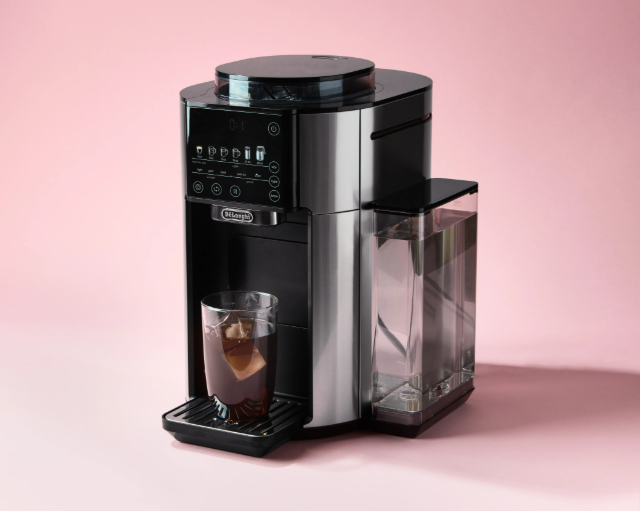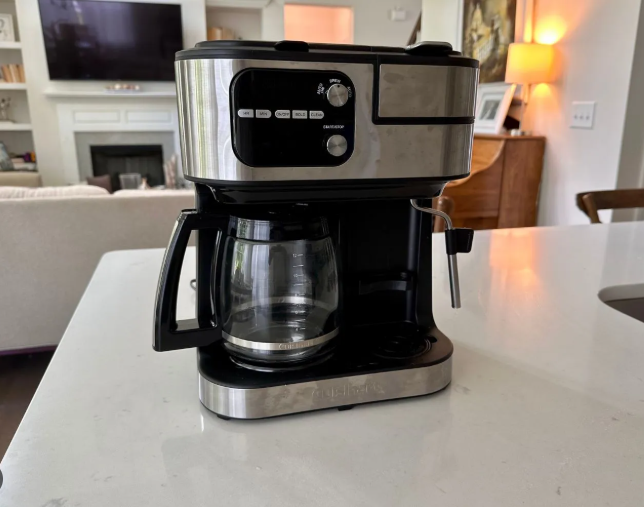For prosumers—coffee enthusiasts who demand professional-grade performance at home—finding the best coffeemaker for prosumers is about precision, customization, and quality. These machines bridge the gap between consumer and barista-grade equipment, offering advanced features like adjustable grind settings, precise temperature control, and robust espresso extraction. In this guide, we explore the top coffeemakers for 2025 tailored for prosumers, along with practical coffeemaker maintenance tips to keep them brewing perfectly. For more brewing tips, visit coffeemakert.com.
Why Prosumers Need a Specialized Coffeemaker
Prosumers are passionate about coffee, often seeking machines that rival café-quality results while allowing hands-on control. The best coffeemaker for prosumers offers features like built-in grinders, customizable brew settings, and professional-grade components such as 58mm portafilters or PID temperature control. These machines cater to those who enjoy tweaking variables like grind size, extraction time, and water temperature to craft the perfect cup. With 2025’s advancements, prosumer coffeemakers combine automation with manual precision, making them ideal for home baristas who value both convenience and craft.
Coffeemaker Setup: Precision from the Start
Setting up the best coffeemaker for prosumers requires attention to detail to ensure optimal performance. Most prosumer machines, like the Breville Barista Pro, arrive with components such as a portafilter, tamper, and water filter that need proper installation. The coffeemaker setup process typically involves rinsing the water tank, installing the filter, and running a water cycle to clean the system. For example, the Rancilio Silvia Pro X includes a water hardness test strip to calibrate settings, ensuring the machine is tailored to your water quality.
Super-automatic models, like the Jura E8, guide users through setup via a digital display, prompting filter installation and initial rinsing. Setup takes 15-30 minutes, and following the manual is crucial to avoid issues like improper pressure calibration. For prosumers, this initial effort ensures the machine is ready for precise brewing. Refer to coffeemakert.com for detailed coffee guide setup advice.

How to Use a Coffeemaker: Mastering Prosumer Machines
Learning how to use a coffeemaker designed for prosumers involves embracing both automation and manual control. Semi-automatic machines like the Breville Barista Pro require you to grind, tamp, and pull shots manually, with options to adjust grind size (30 settings) and shot time. Super-automatic models, like the De’Longhi Dinamica Plus, simplify the process with one-touch brewing for espresso, cappuccino, or drip coffee, while still allowing customization of strength and volume.
For optimal results, use fresh, high-quality beans and a burr grinder for consistent grounds. Prosumers should aim for a 1:2 coffee-to-water ratio (e.g., 18g coffee for a 36g espresso shot) and an extraction time of 25-30 seconds. Machines with PID controllers, like the Rancilio Silvia Pro X, ensure stable water temperatures (around 200°F) for consistent extraction. Practice and experimentation are key to dialing in your perfect brew.
Coffeemaker Troubleshooting: Keeping Your Machine Dialed In
Even the best coffeemaker for prosumers can face issues, but coffeemaker troubleshooting is manageable with the right approach. Common problems include inconsistent espresso shots or poor milk frothing. If shots taste sour or bitter, adjust the grind size—finer for sour (under-extracted) shots, coarser for bitter (over-extracted) ones. Check the tamp pressure (aim for 30 pounds) and ensure the portafilter is clean to avoid clogs.
Slow water flow often indicates limescale buildup; descale every 1-2 months using a manufacturer-approved solution. For milk frothers, like those on the Jura E8, clean the wand or milk system immediately after use to prevent blockages. If the machine stops dispensing, check the brew group or water tank seals. Always consult the manual for model-specific fixes to maintain professional-grade performance.
Coffeemaker Cleaning: Essential for Prosumer Machines
Regular coffeemaker cleaning is critical for prosumer machines to maintain flavor and functionality. Most models feature removable parts like drip trays, portafilters, and milk systems that are dishwasher-safe or easy to clean by hand. For example, the Breville Barista Pro’s steam wand requires daily purging and wiping to prevent milk residue buildup, while the De’Longhi Dinamica Plus has an auto-rinse function for its milk system.
Descale every 1-2 months with a vinegar-water mix (1:1) or a dedicated descaler, followed by water-only cycles. Machines with water filters, like the Jura E8, need filter replacements every 3-6 months to reduce limescale. Clean the brew group weekly on semi-automatic machines to remove coffee oils. These coffeemaker maintenance tips ensure your machine delivers café-quality coffee consistently.
Portable Coffeemaker: Prosumer Options for Travel
While prosumer machines are typically countertop models, some compact options double as portable coffeemakers for enthusiasts on the go. The Flair Espresso Maker, a manual lever machine, is lightweight (5 pounds) and portable, producing professional-grade espresso with a 58mm portafilter. It requires no electricity, making it ideal for camping or travel, though it demands skill to master.
For a semi-automatic option, the Breville Bambino Plus is compact (7.7 x 12.6 x 12.2 inches) and delivers excellent espresso with a steam wand for frothing. Its small size makes it suitable for small apartments or occasional travel. These machines require careful packing to protect components but offer prosumer-level quality in portable formats.
Coffeemaker Tips: Elevating Your Prosumer Brew
To get the most from the best coffeemaker for prosumers, follow these coffeemaker tips:
- Use fresh, high-quality beans: Choose non-oily, freshly roasted arabica beans for optimal flavor and grinder performance.
- Invest in a burr grinder: Consistent grind size is crucial for espresso; aim for a fine, powdery texture.
- Dial in your espresso: Adjust grind size, dose (18-20g), and extraction time (25-30 seconds) for balanced shots with rich crema.
- Monitor water quality: Use filtered water or install a water filter to prevent limescale and enhance taste.
- Practice milk frothing: For lattes and cappuccinos, steam milk to 140-160°F for silky microfoam, purging the wand before and after.
For more brewing tips, visit coffeemakert.com.
Coffeemaker Maintenance: Long-Term Care for Prosumer Machines
Proper coffeemaker maintenance is vital for prosumer machines, which often have complex components like grinders and brew groups. Lubricate moving parts, such as the brew group on the Rancilio Silvia Pro X, monthly with food-safe grease. Replace water filters and gaskets as recommended to prevent leaks. Store the machine in a dry, cool place to avoid corrosion, and use a knock box to dispose of spent coffee pucks cleanly.
Regular maintenance extends the lifespan of prosumer machines (5-10 years) and ensures consistent brew quality. Manufacturers like Breville and De’Longhi offer replacement parts, such as portafilters and steam wands, to keep your machine in top condition.
Coffeemaker Safety: Brewing with Precision and Care
Coffeemaker safety is crucial for prosumer machines, which often handle high pressure and hot water. Features like auto-shutoff (after 30 minutes on the Jura E8) and pressure safety valves on the Breville Barista Pro reduce risks. Always purge the steam wand before and after use to prevent burns, and unplug the machine when not in use. Avoid overfilling the water tank, and handle portafilters carefully to avoid spills or pressure mishaps.

Best Coffeemaker Guide: Top Picks for Prosumers in 2025
In this best coffeemaker guide, we highlight four standout machines for prosumers in 2025, based on performance, customization, and build quality, drawing from expert testing and reviews:
- Breville Barista Pro: Priced around $850, this semi-automatic espresso machine features a built-in conical burr grinder with 30 settings, PID temperature control, and a 58mm portafilter for professional-grade shots. It brews espresso in 25-30 seconds and includes a steam wand for microfoam. Testers praise its intuitive LCD display and fast heat-up (3 seconds), though the grinder can be noisy. Ideal for prosumers who want control and versatility.
- Rancilio Silvia Pro X: At approximately $1,900, this semi-automatic machine offers dual boilers, PID control, and a shot timer for precise espresso extraction. Its 58mm portafilter and commercial-grade components make it a favorite among home baristas. Testers note its excellent crema and build quality, but it requires skill to master. Perfect for prosumer tinkerers.
- De’Longhi Dinamica Plus: Priced at $1,400, this super-automatic machine features a built-in grinder, one-touch brewing for 16 drinks, and an adjustable milk frother. It’s quieter than most, with a 10.5-ounce bean hopper and auto-rinse functions. Testers love its ease of use and consistent espresso, though filter replacements add to costs. Great for prosumers seeking automation with customization.
- Jura E8: At around $2,300, this super-automatic machine offers 17 drink options, a professional aroma grinder, and a color display for easy customization. Its pulse extraction process enhances espresso flavor, and the milk system auto-cleans. Testers praise its barista-quality drinks, but it’s expensive and less hands-on. Best for prosumers who prioritize convenience.
How to Brew Coffee in a Coffeemaker: Prosumer Techniques
Mastering how to brew coffee in a coffeemaker for prosumers involves precision and practice. For semi-automatic machines like the Breville Barista Pro:
- Fill the water tank with filtered water and install any water filters.
- Grind 18-20g of fresh coffee to a fine consistency and tamp evenly in the portafilter.
- Lock the portafilter, select your shot volume, and pull a 25-30 second shot.
- For milk drinks, steam milk to 140-160°F using the steam wand, aiming for silky microfoam.
- Clean the portafilter and purge the wand immediately after use.
For super-automatic machines like the Jura E8, select your drink, adjust strength and volume via the display, and let the machine handle grinding, tamping, and brewing. Use fresh beans and experiment with settings to dial in your ideal flavor profile.
Pros and Cons of the Best Coffeemakers for Prosumers
To summarize the best coffeemaker for prosumers, here’s a look at the pros and cons:
- Pros:
- Professional-grade features like PID control, 58mm portafilters, and built-in grinders.
- High customization for grind size, shot volume, and brew strength.
- SCA-certified models ensure barista-quality coffee.
- Durable build quality for long-term use (5-10 years).
- Versatile for espresso, drip, and milk-based drinks.
- Cons:
- High price points ($850-$2,300).
- Steep learning curve for semi-automatic models.
- Regular maintenance (descaling, filter replacements) adds to costs.
Conclusion: Choosing the Best Coffeemaker for Prosumers
The best coffeemaker for prosumers in 2025 depends on your balance of control, convenience, and budget. The Breville Barista Pro and Rancilio Silvia Pro X cater to hands-on enthusiasts who love tweaking variables, while the De’Longhi Dinamica Plus and Jura E8 offer automated precision for those prioritizing ease. With proper coffeemaker maintenance and attention to brewing techniques, these machines deliver café-quality coffee at home. For more guidance on how to brew coffee in a coffeemaker, visit coffeemakert.com. Invest in one of these top picks, and elevate your coffee game to professional levels.